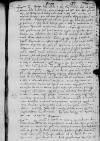List #2001
[Ioannes DANTISCUS] do [Sigismund I Jagiellon]Heilsberg (Lidzbark Warmiński), 1538-11-26
Regest polski:
Dantyszek otrzymał list od króla [Zygmunta I Jagiellona]. Listy skierowane do wojewodów pruskich przekazał natychmiast biskupowi chełmińskiemu [Tiedemmannowi Giese]. Obiecuje dołożyć starań, by woli króla stało się zadość.
Dantyszek zaprzecza wysuniętym wobec niego [w liście królowej Bony] oskarżeniom, jakoby sam zadecydował, że pieniądze z podatku powinny być przechowywane w ratuszu toruńskim. Przypomina królowi o dotyczącym tej sprawy liście Rady Pruskiej z 9 października 1537. Jako pierwszy senator bywa zmuszony do przekazywania królowi kolegialnych decyzji Rady. Zapewnia o swoim poszanowaniu dla autorytetu i godności królewskiej.
Rękopiśmienne podstawy źródłowe:
Publikacje:
| ||||||||||||||||||
Tekst + aparat krytyczny + komentarz Zwykły tekst Tekst + komentarz Tekst + aparat krytyczny
Serenissime etc.
Accepi cf.
cf.
Quod si ea de re, quae omnium consensu fit, mihi exprobrari culpaque impingi debeat soli, satius erit, ut me contineam, non tamen eam non curantiam rebus Serenissimae Maiestatis Vestrae commodo futuram existimo, cuius dignitatis ac auctoritatis tanta est apud me ratio atque existimatio, ut nulla de re in terris possit mihi esse maior, priusque meipsius obliviscar, quam tot in me collatorum beneficiorum Serenissimae Maiestatis Vestrae fieri umquam possim immemor, in eoque numquam mihi monitore opus erit, modo dominus Deus eandem Serenissimam Maiestatem Vestram nobis diutissime incolumem et superstitem conservet.
Quod a divina clementia, quantum totis eniti viribus possum, orare non desino Serenissimaeque Maiestati Vestrae eiusque solitae in me gratiae supplicissime me commendo.

 BCz, 245, p. 107
BCz, 245, p. 107